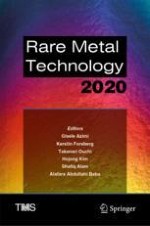This collection presents papers from a symposium on extraction of rare metals as well as rare extraction processing techniques used in metal production. Rare metals include strategic metals that are in increasing demand and subject to supply risks. Metals represented include neodymium, dysprosium, scandium and others; platinum group metals including platinum, palladium, iridium, and others; battery related metals including lithium, cobalt, nickel, and aluminum; electronics-related materials including copper and gold; and refectory metals including titanium, niobium, zirconium, and hafnium. Other critical materials such as gallium, germanium, indium and silicon are also included. Papers cover various processing techniques, including but not limited to hydrometallurgy (solvent extraction, ion exchange, precipitation, and crystallization), electrometallurgy (electrorefining and electrowinning), pyrometallurgy, and aeriometallurgy (supercritical fluid extraction). Contributions are focused on primary production as well as secondary production through urban mining and recycling to enable a circular economy.
A useful resource for all involved in commodity metal production, irrespective of the major metal
Provides knowledge of cross-application among industries
Extraction and processing of rare metals that are the main building block of many emerging critical technologies have been receiving significant attention in recent years.
The technologies that rely on critical metals are prominent worldwide, and finding a way to extract and supply them effectively is highly desirable and beneficial.
